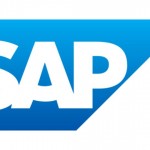LUMA CEOが語る、アドテクノロジーの整理統合の動き(英文)
 Terence Kawaja, founder and CEO at LUMA Partners, has surveyed the past few week’s notable deals — demand side platforms MediaMath’s acquisition of Akamai’s Advertising Decision Solutions (ADS) unit (which his firm helped broker); exchange platform AppNexus’ $75 million venture capital funding; and the shuttering of adBrite’s exchange business. And he sees the clear formation of the ad tech industry consolidation that industry participants and observers believed was coming two years ago.
Terence Kawaja, founder and CEO at LUMA Partners, has surveyed the past few week’s notable deals — demand side platforms MediaMath’s acquisition of Akamai’s Advertising Decision Solutions (ADS) unit (which his firm helped broker); exchange platform AppNexus’ $75 million venture capital funding; and the shuttering of adBrite’s exchange business. And he sees the clear formation of the ad tech industry consolidation that industry participants and observers believed was coming two years ago.
“I looked at these three deals and sat there scratching my head, thinking, here we go,” Kawaja told AdExchanger in an interview. “And I thought that this is actually a good thing. These three deals may be a harbinger of things to come. But it’s really a continuation of something that’s been happening for the last two years, not a start.”
What has changed now is that private ad tech companies like AppNexus have the wherewithal to make acquisitions — it’s no longer just the province of giant public companies like Google, Adobe, IBM and others. In a LUMA blog post, Kawaja presents two columns showing 23 private ad tech firms. Almost all of these names have been making acquisitions.
“Everyone wants to sell to Google, IBM, Adobe – but the reality is, part of the demand for small, quality advertising technology companies will in fact be the larger, private, scaled ad tech companies,” he said. “For the private companies, deals are a way for them to augment other capabilities. If you have a large display player, for example, you start to hear some of them say they need to move into mobile or have video capabilities. Companies that have achieved a certain scale in one channel, find that they need into other verticals to keep growing.”
But what about companies like adBrite, which had struggled for years to make the transition from ad network to ad exchange? The failure of adBrite — it was unable to sell the company as a whole, so it is currently winding down and selling off its IP assets piecemeal — is indicative that bankers and venture capitalists will be less likely to keep pumping money into companies that demand continued patience and support.
“The consolidation we’re seeing now can come in one of two ways: M&A or failure,” Kawaja said. “Nothing against adBrite; its dissolution is unfortunate for its investors, its employees. But we need to clear out all these companies that are marginal. We don’t need eight ad networks. Quite frankly, we don’t need a seventh or a sixth either. How many ad exchanges do we need? The answer’s probably like three. And I don’t count the Facebook Exchange in that group – they’re a single publisher with a ton of inventory and an API on the buyside.”
The profile that a Facebook presents, that of a company that has various capabilities, for both public and private entities, are the ones that will drive out the players that can’t compete and offer the marketplace something uniquely valuable. To prove their value, companies will have to prove that they can scale their services in the near term, not the long term. The scalability of companies like Mediaocean, Rocketfuel, Videology, Criteo, Glam and others will put increased pressure on the public companies as the latter find themselves faced with competition for smaller tech providers.
“It used to be, you had to have one of those public companies buy you. But here are scaled private companies that can be added to the list as potential exits for ad tech providers. Comparing the LUMAscapes, when I did the math, they never declutter. In the period between 2010 and 2012, you had 53 companies were acquired. That sounds great. But then when you’d look and you saw 74 new ones appeared. But things have changed. The system is going to be de-cluttered, after resisting those pressures for so long. Initially, I was going to call my post ‘Celebrating Failure.’ But In effect, we have a game of LUMAscape whack-a-mole.”











